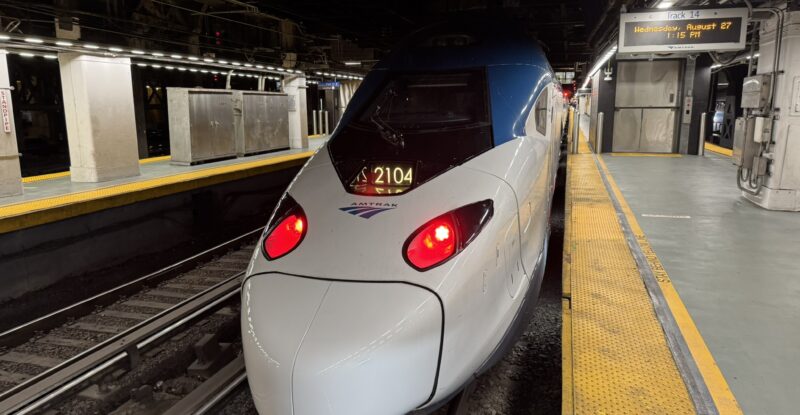 When Amtrak’s first generation Acela service launched more than a quarter century ago it was received with fireworks displays and massive infrastructure improvements to match. The launch of NextGen Acela is met not with televised excitement, but a sigh of relief from riders of Amtrak’s premium Northeast high-speed rail. Riders are finally getting their new trains, but they come wrapped in a mid-2010’s bow.
When Amtrak’s first generation Acela service launched more than a quarter century ago it was received with fireworks displays and massive infrastructure improvements to match. The launch of NextGen Acela is met not with televised excitement, but a sigh of relief from riders of Amtrak’s premium Northeast high-speed rail. Riders are finally getting their new trains, but they come wrapped in a mid-2010’s bow.
At a media preview ride the day before the launch of service, Amtrak showed off all the bells and whistles of NextGen Acela. Originally ordered in 2016 for a service launch in 2021, the $2.45 billion order from Alstom took four years of additional testing to prove its ability to run on Amtrak’s outdated infrastructure.
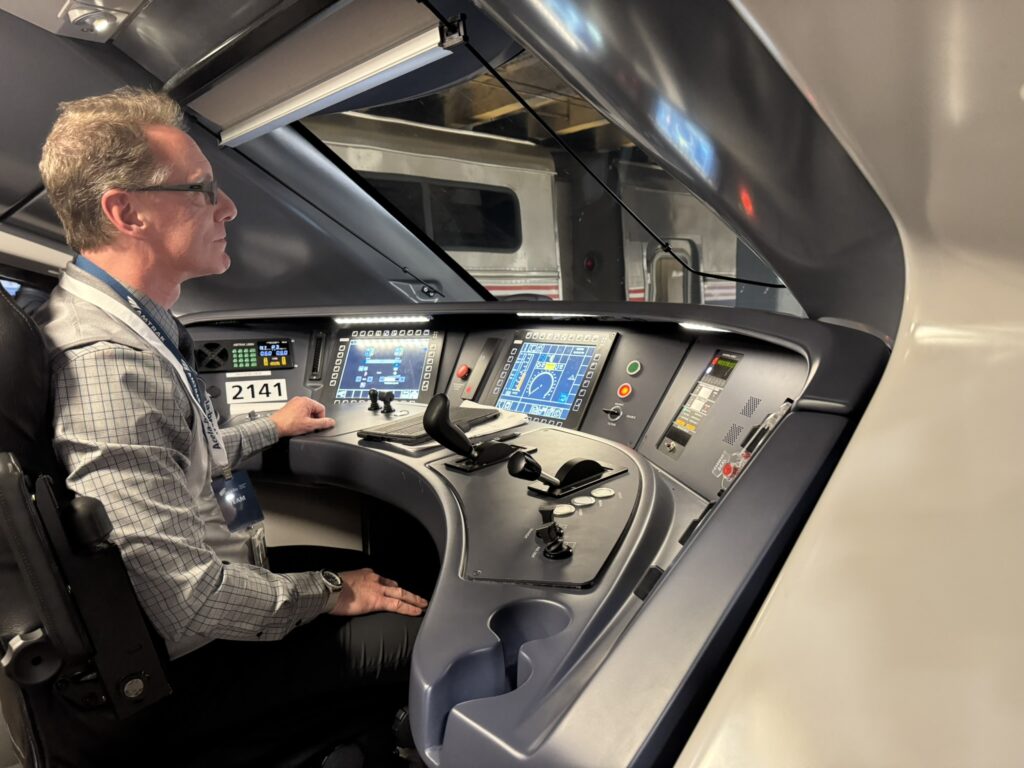 In the meantime, Amtrak’s original Acela fleet underwent a slow death as entire trainsets were cannibalized to support those left in service as their interiors continued to deteriorate. The new service finally launches with four out of the planned 28 trainsets on August 28, 2025, with all 28 gradually entering service through 2027.
In the meantime, Amtrak’s original Acela fleet underwent a slow death as entire trainsets were cannibalized to support those left in service as their interiors continued to deteriorate. The new service finally launches with four out of the planned 28 trainsets on August 28, 2025, with all 28 gradually entering service through 2027.
The most immediate difference is the sheer size of the trains. The original Acela trainsets offered 260 business class (the lowest class of service on Acela) seats across its six passenger coaches.
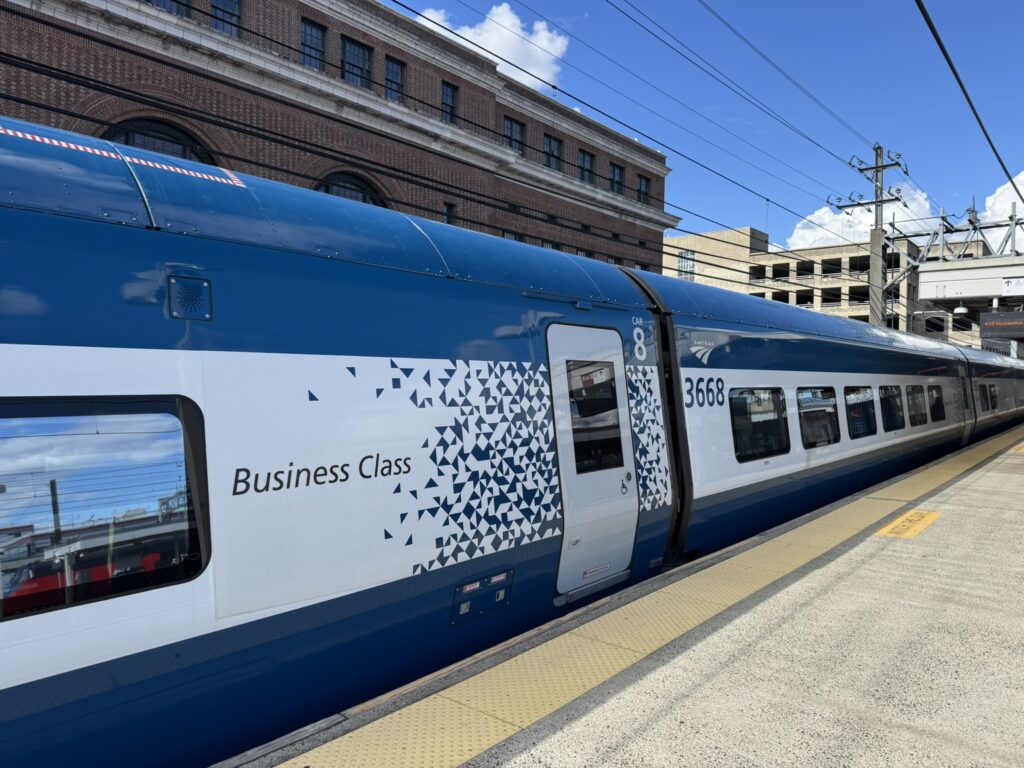 NextGen Acela offers a 27% boost in capacity, with 345 business class seats across seven out of the nine total coaches. Between the increased passenger capacity and increase in fleet size, NextGen Acela’s most tangible benefit will likely be the greater seat availability with a more robust schedule and potential for lower fares to match.
NextGen Acela offers a 27% boost in capacity, with 345 business class seats across seven out of the nine total coaches. Between the increased passenger capacity and increase in fleet size, NextGen Acela’s most tangible benefit will likely be the greater seat availability with a more robust schedule and potential for lower fares to match.
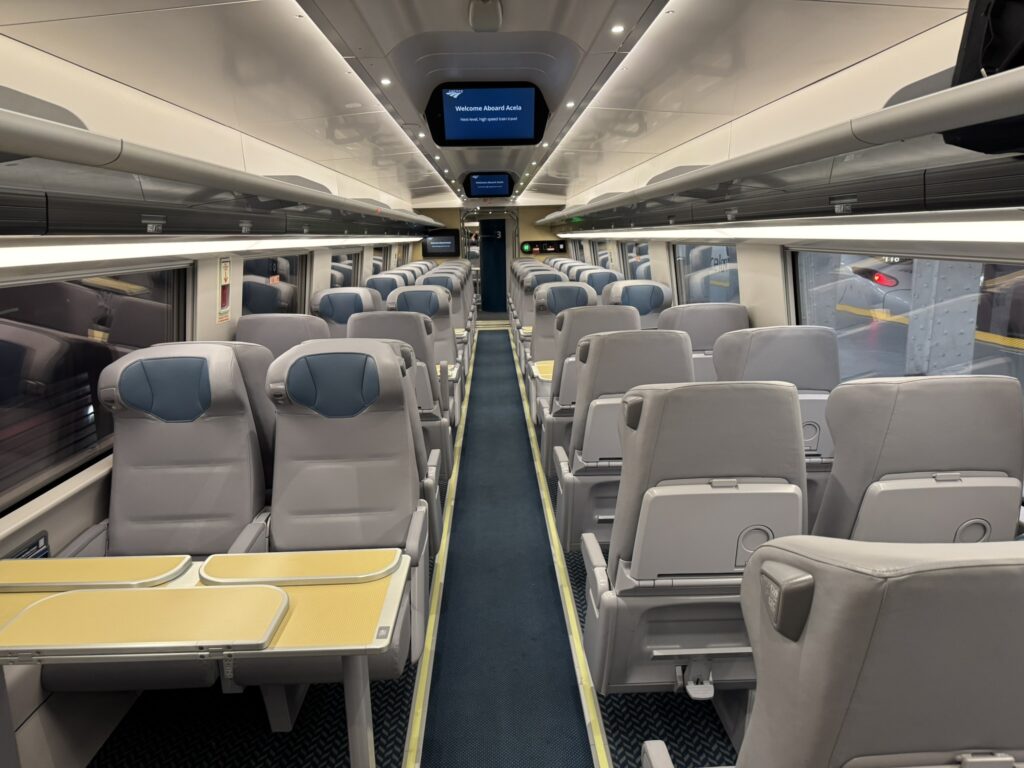
Every little bit of the original Acela’s #PaxEx is updated on NextGen Acela, without a doubt. But the new design lacks imagination and flair. While Amtrak sought to replicate an aircraft experience on the original Acela fleet, down to the airline-style overhead bins, NextGen Acela is decidedly a run of the mill train.
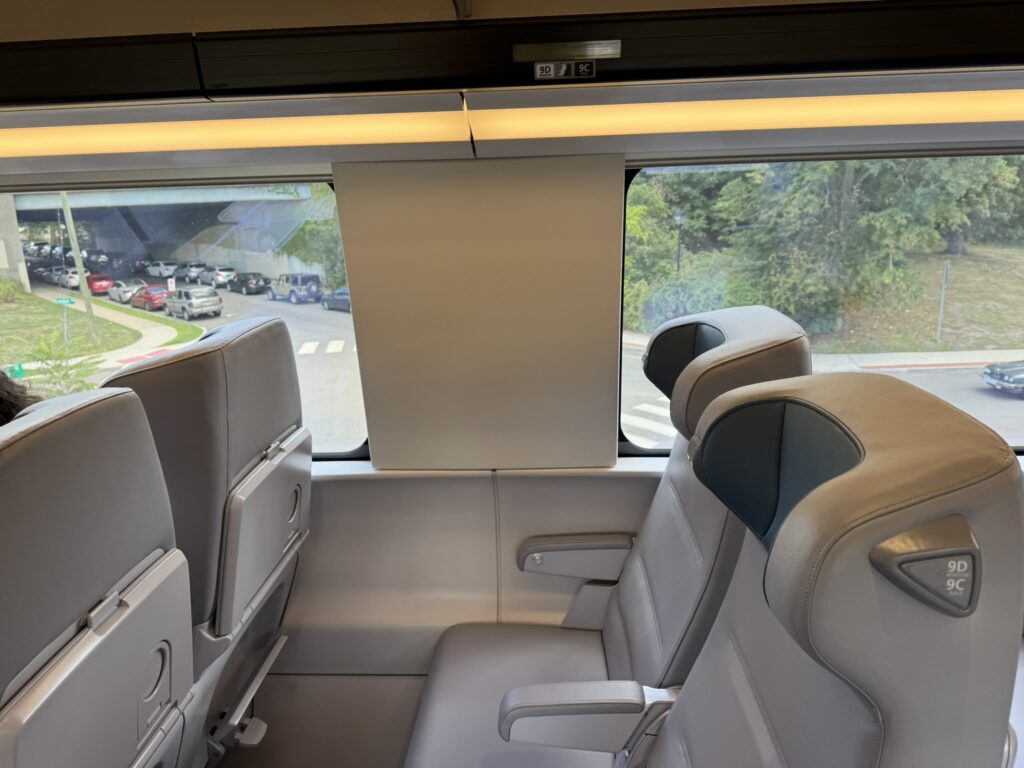
Much like the Siemens Venture coaches in the Midwest and concept renderings for the high density single-level longhaul fleet concept, seat recline in both Business and First Class comes only in the form of the seat pan shifting forward while the seatback remains upright. The lower portion of the seatback extends a little bit to match, at least.
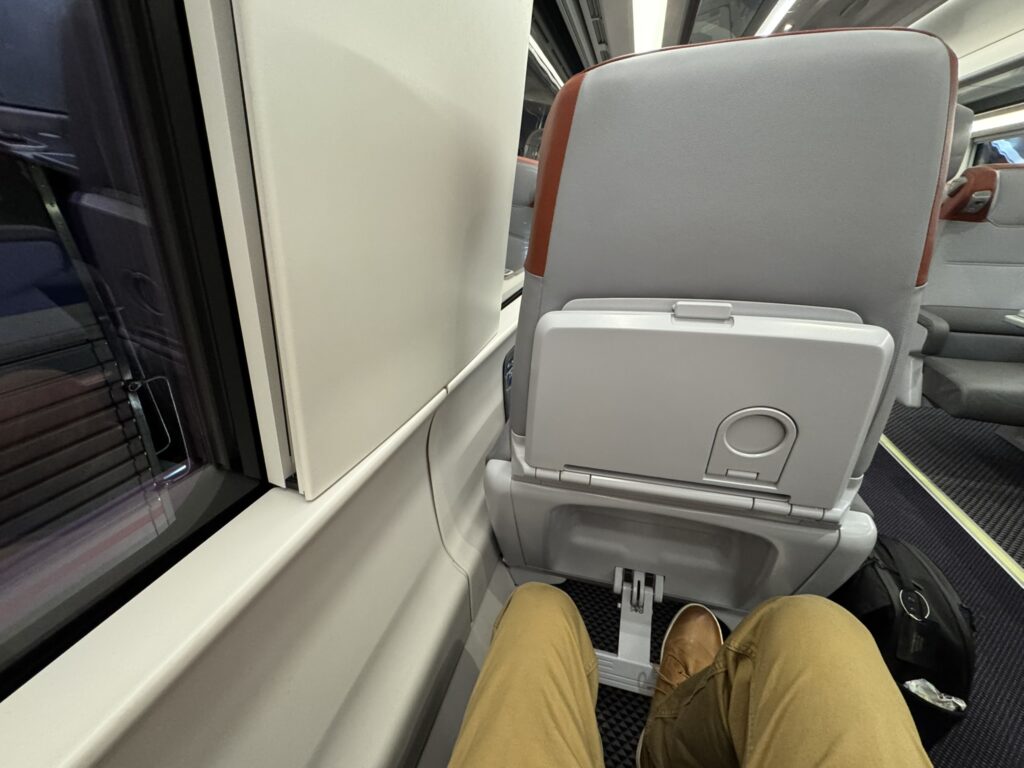 This is in stark contrast to the original Acela’s generous seatback recline. Seats are also fixed in position and cannot be rotated to face the direction of travel, leaving roughly half the passengers on board facing the rear of the train.
This is in stark contrast to the original Acela’s generous seatback recline. Seats are also fixed in position and cannot be rotated to face the direction of travel, leaving roughly half the passengers on board facing the rear of the train.
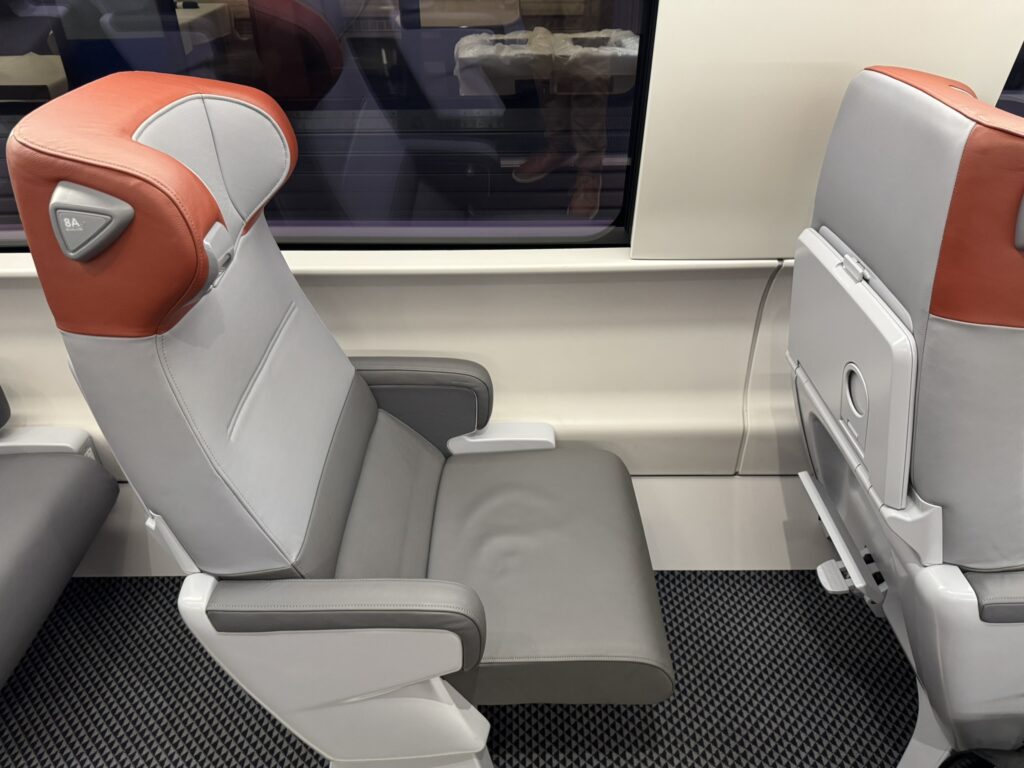
The chunky grey and blue design of the business class seats screams mid-2010’s design, and in fact very closely resemble the original renderings put forward by Amtrak nearly a decade ago.
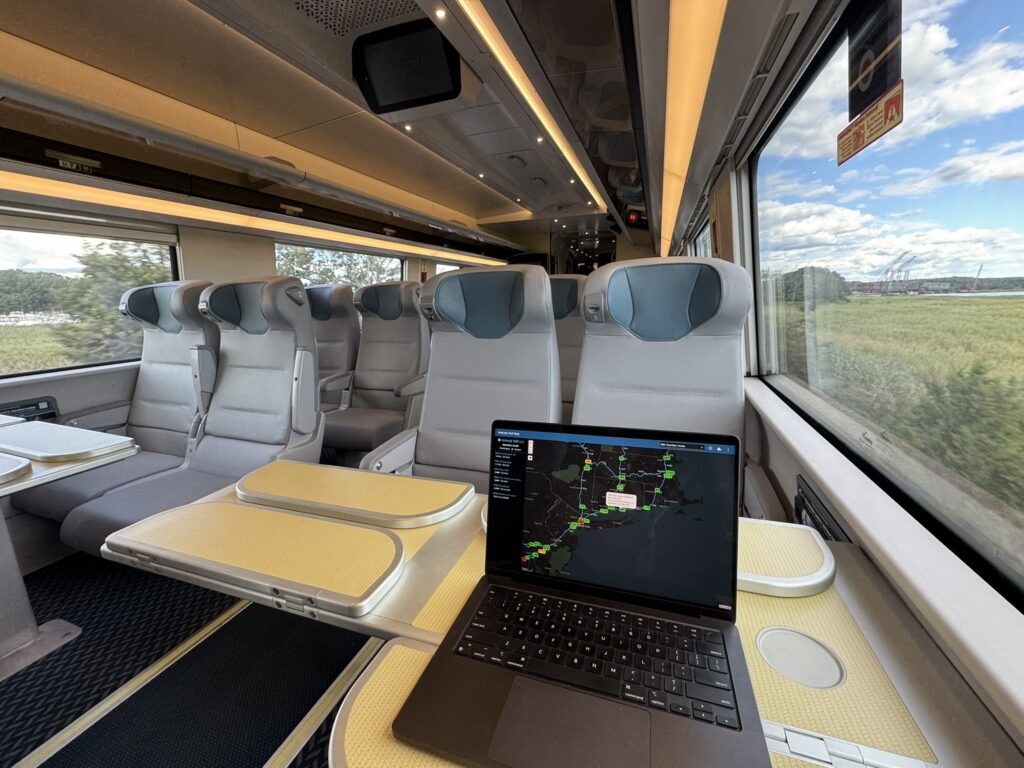 While they are not the most visually appealing, the seats are reasonably comfortable for the typical 3–6 hour journey that riders of Acela will typically experience.
While they are not the most visually appealing, the seats are reasonably comfortable for the typical 3–6 hour journey that riders of Acela will typically experience.
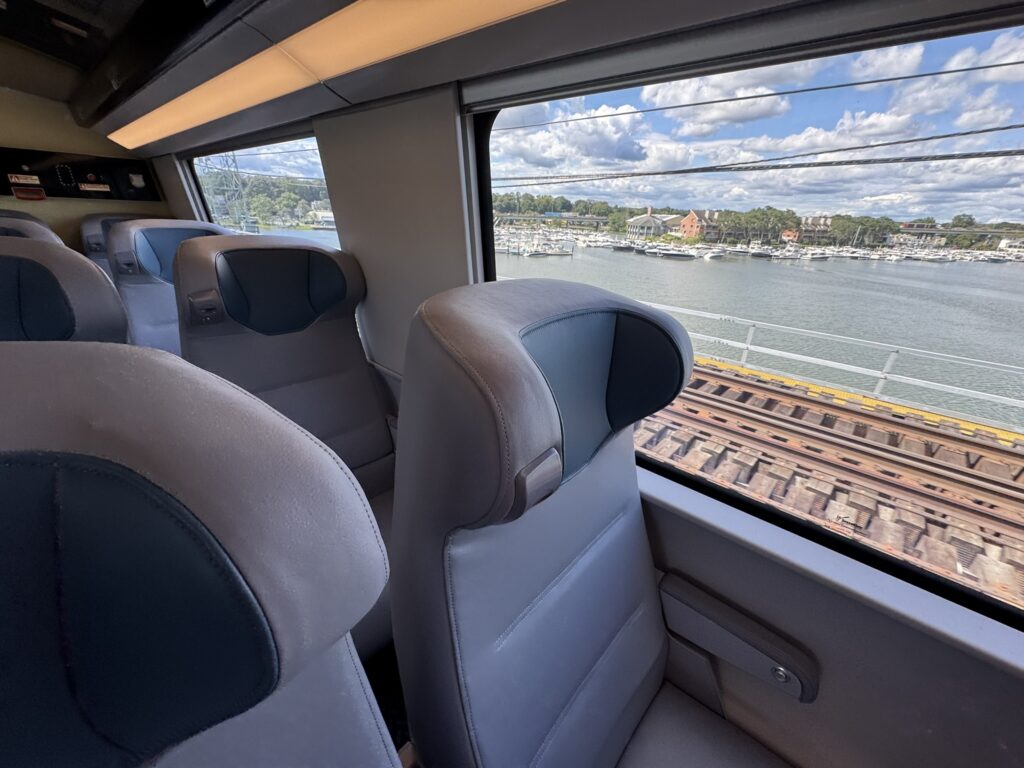 I found that the “recline” function made the seat less comfortable for me, however. I’ll certainly miss the true recline of older trains.
I found that the “recline” function made the seat less comfortable for me, however. I’ll certainly miss the true recline of older trains.
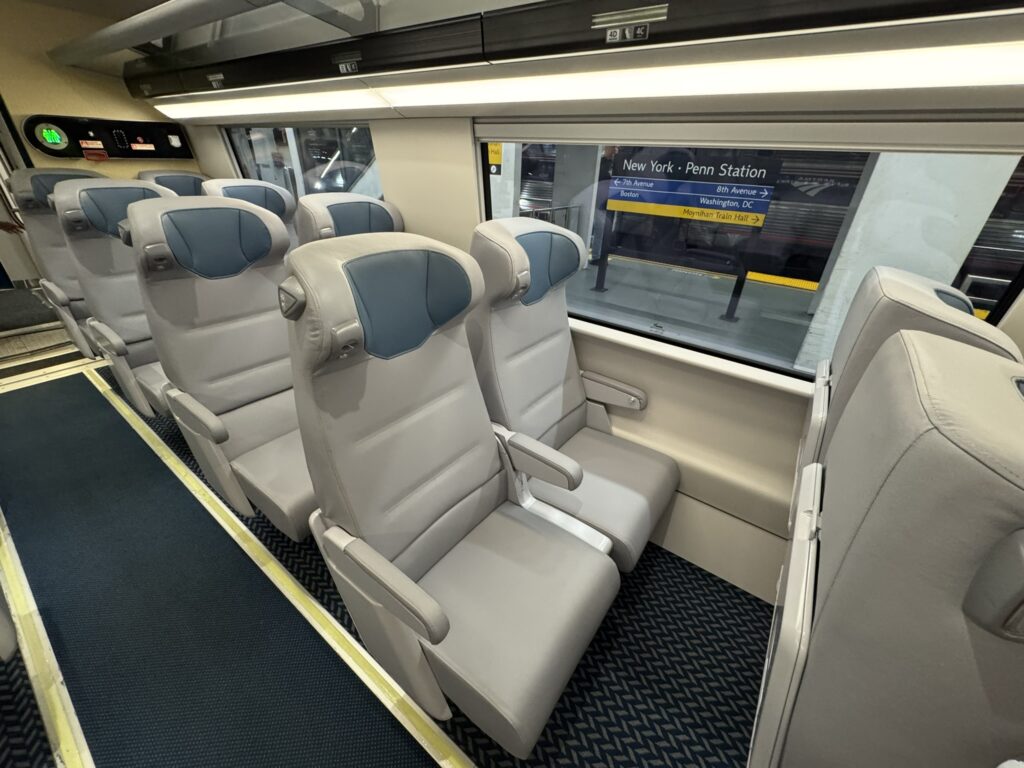
Riders in the forward-reverse table seats in Business Class might also be getting to know their seat neighbors more than they wish. The sliding seat pan results in passengers legs and knees meeting in the middle, creating some uncomfortable situations.

First Class seating appears to be the same base model seat with the same set of features, albeit with the benefit of slightly wider seats due to the 1-2 layout and additional pitch. Unlike its vision for its future single-level long distance fleet, Amtrak has not taken any measures to make its First Class offering feel more premium than business class other than a shift from blue to red headrest accents.
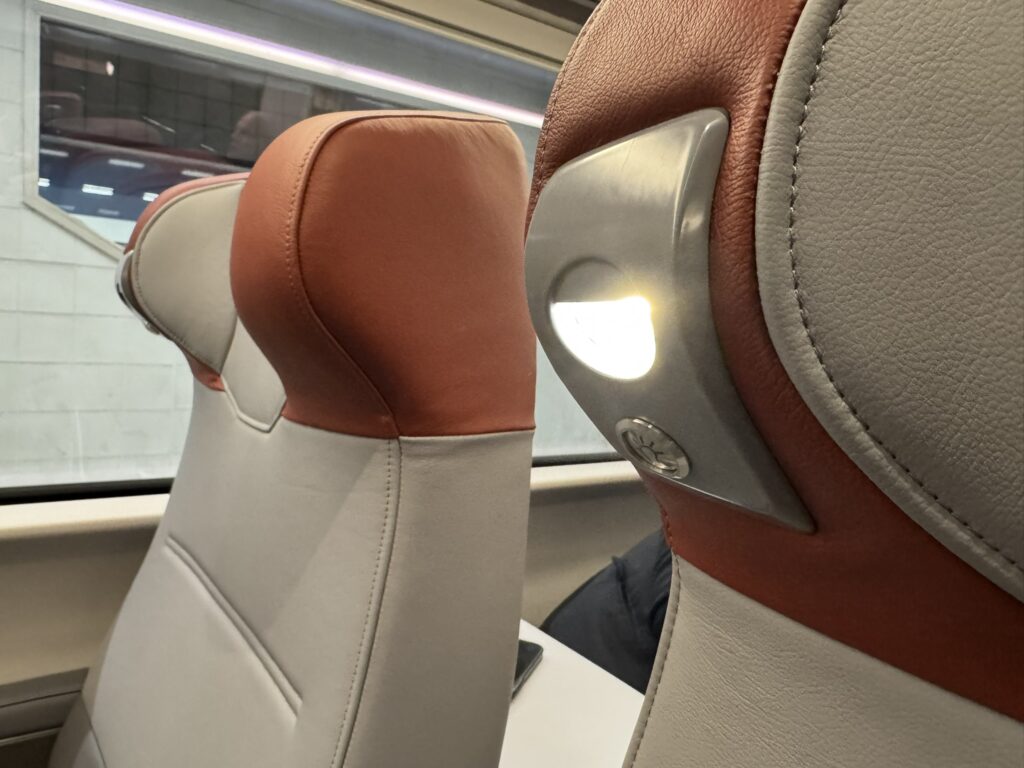 Amtrak’s elevated soft product and at-seat service is going to have to do a lot of heavy lifting to convince riders that an upgrade to First Class is worth the spend. Even most regional jets deliver a differentiated first class seat with generous additional recline, but NextGen Acela does not.
Amtrak’s elevated soft product and at-seat service is going to have to do a lot of heavy lifting to convince riders that an upgrade to First Class is worth the spend. Even most regional jets deliver a differentiated first class seat with generous additional recline, but NextGen Acela does not.
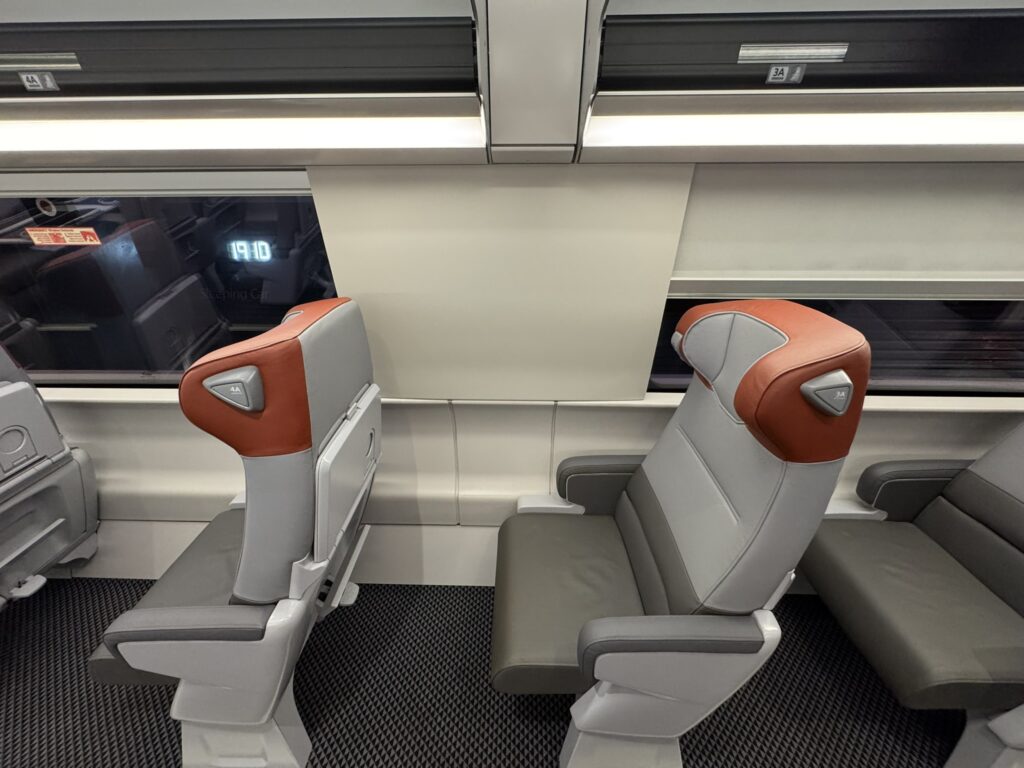
On the technology front, passengers now have easier access to AC power outlets between seats rather than along the sidewall of the train. While USB ports have also been added, the delayed entry into service of the train is made apparent again as only USB-A ports have been installed. Amtrak can and should upgrade this to add USB-C. In fact, the USB ports in the First Class car all had USB-A to C adapters inserted, though those won’t remain in place beyond the first few passengers uses. Amtrak also touts 5G enabled Wi-Fi, a feature available on the original Acela fleet and on recent trips performed extremely well.
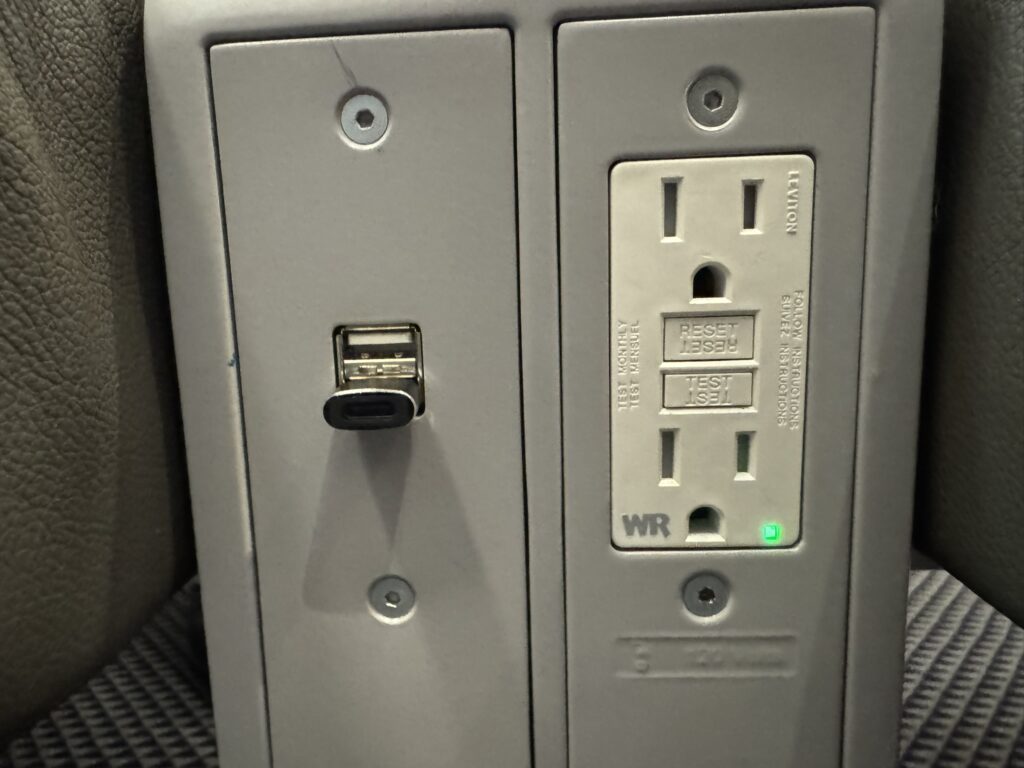
One of the biggest changes is the Café Car overhaul. Amtrak has shifted to a hybrid self-service model which aims to reduce some of the long lines passengers often encounter on busy trains.

Passengers will be able to select grab-and-go items from refrigerators and pay at a kiosk, while alcohol and fresh or hot items will be served as usual by an attendant.
 Passengers will not, however, find any place to sit in the new Café Car.
Passengers will not, however, find any place to sit in the new Café Car.
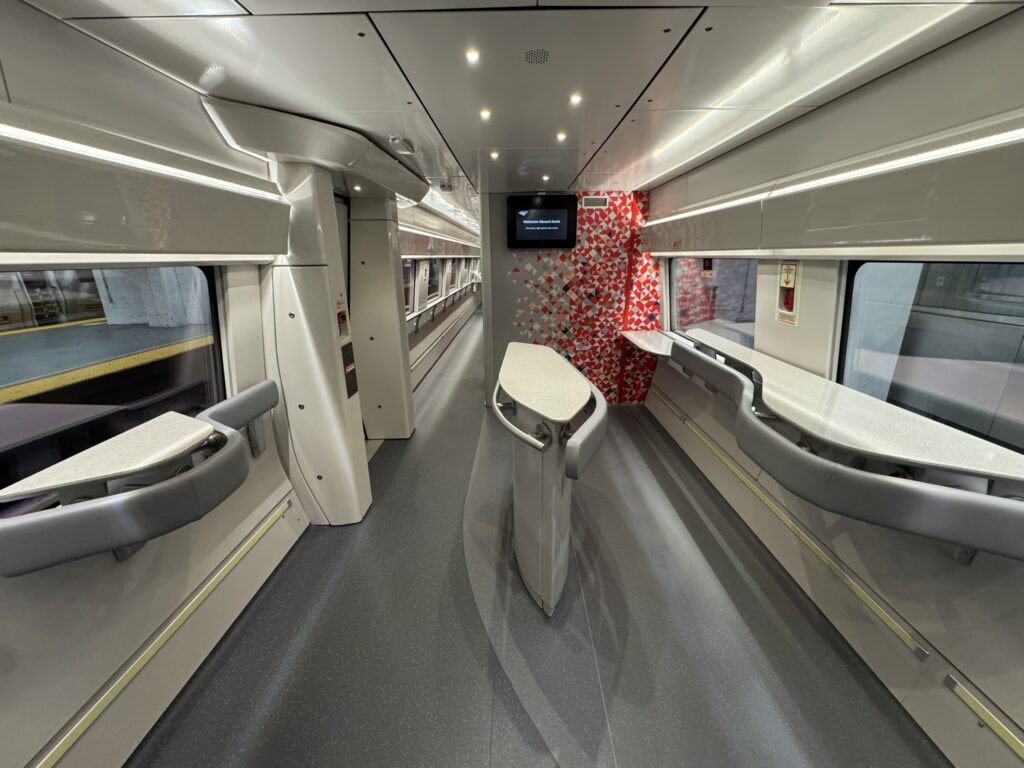
Unlike the generous booths on Northeast Regional trains and the minimal stool seating on the original Acela, NextGen Acela Café Cars feature no seating. Passengers will have to retreat to their seats, leaving little space to socialize with fellow passengers.
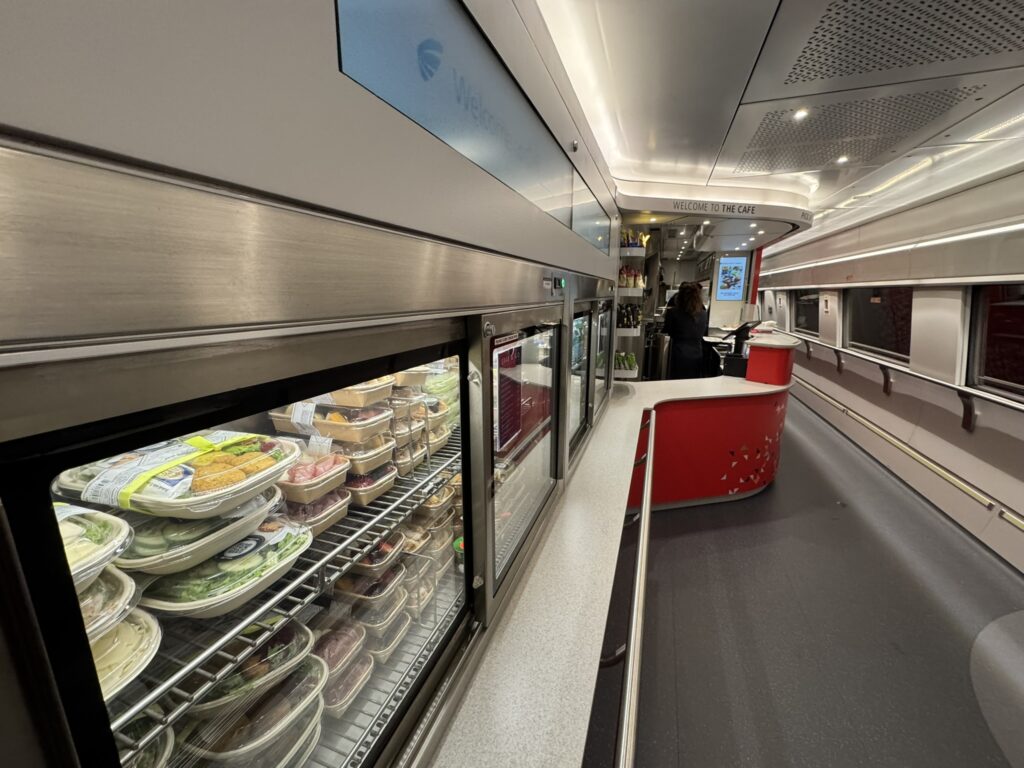 Accessibility features are also notable throughout the train, from the extending platform fillers to ensure passengers don’t have to step over a large gap when entering or exiting the train to the large restrooms.
Accessibility features are also notable throughout the train, from the extending platform fillers to ensure passengers don’t have to step over a large gap when entering or exiting the train to the large restrooms.
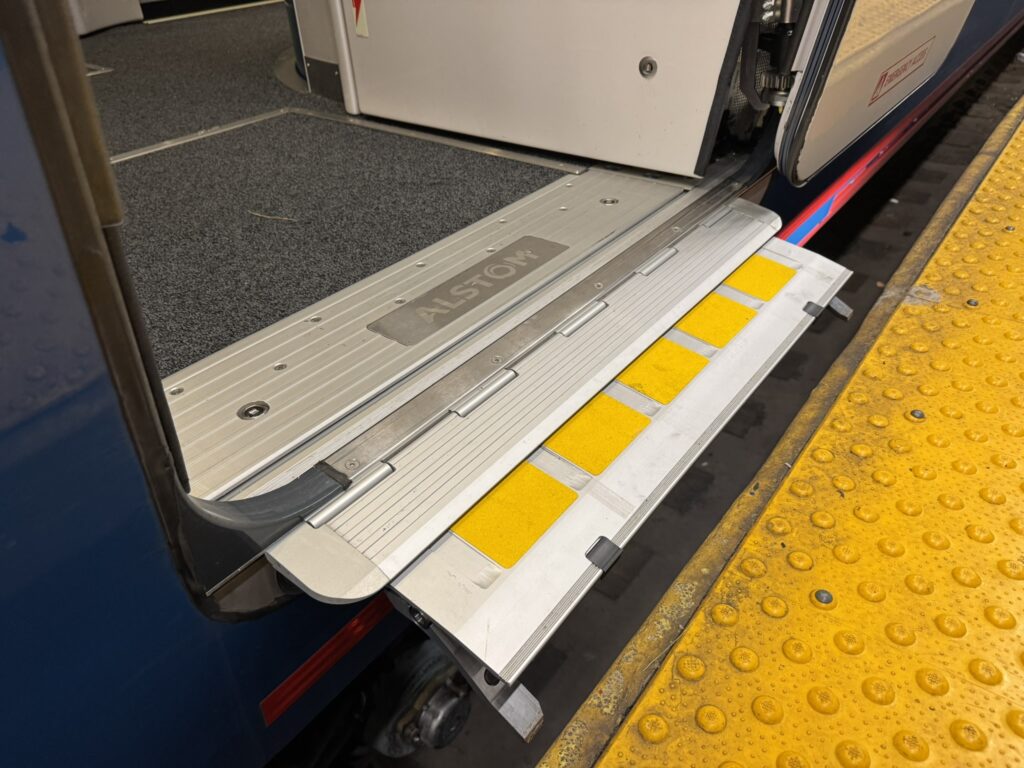 Accessible restrooms feature motorized doors and locks, with audio cues for the door lock.
Accessible restrooms feature motorized doors and locks, with audio cues for the door lock.
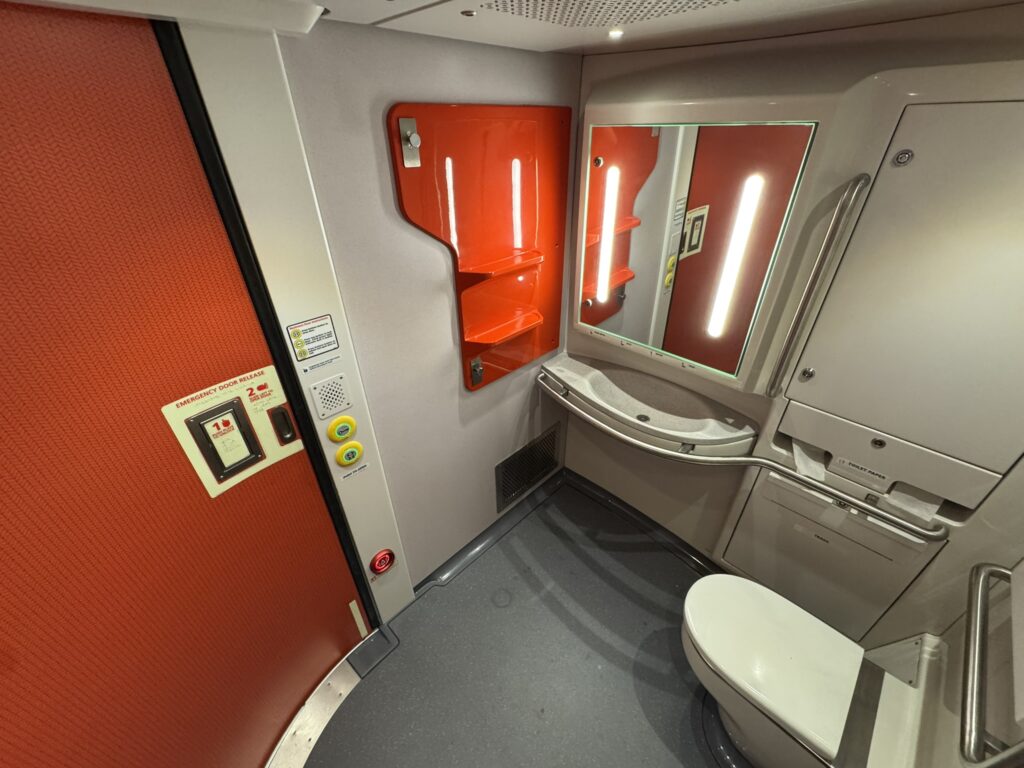 My journey on the media train briefly reached NextGen Acela’s higher top speed of 160 MPH, 10 MPH higher than original Acela’s top speed. The overall ride was markedly smoother than any other Amtrak train I have been on, especially so at the highest operating speed. For a brief moment it felt like a ride on Japan’s Shinkansen.
My journey on the media train briefly reached NextGen Acela’s higher top speed of 160 MPH, 10 MPH higher than original Acela’s top speed. The overall ride was markedly smoother than any other Amtrak train I have been on, especially so at the highest operating speed. For a brief moment it felt like a ride on Japan’s Shinkansen.
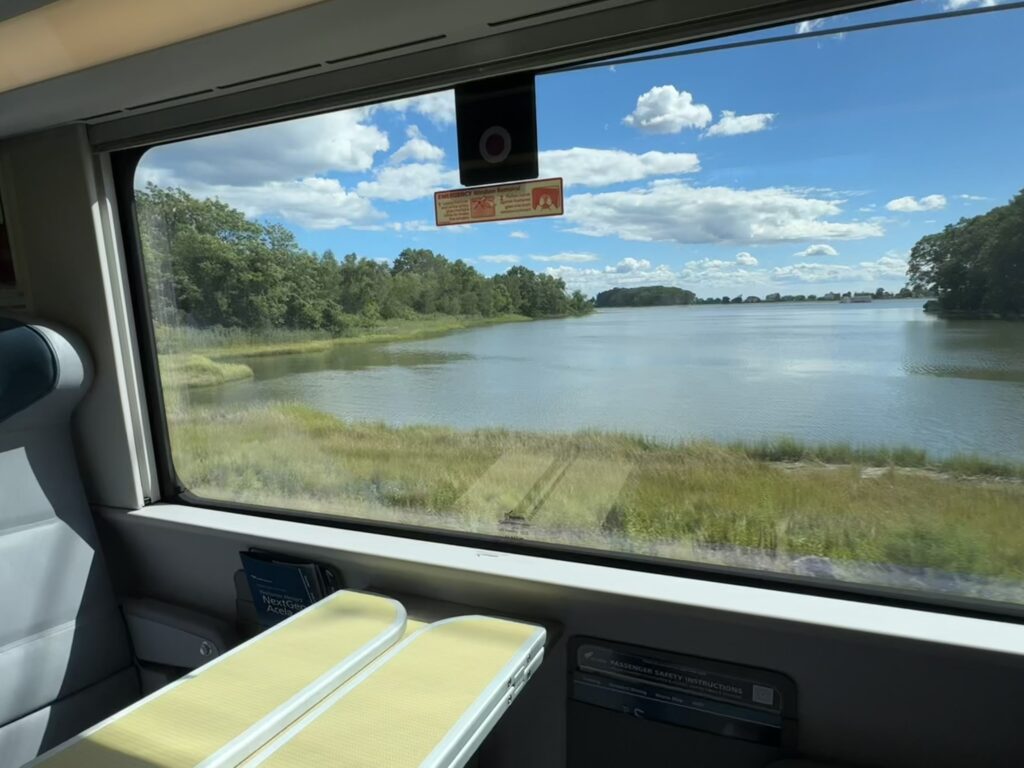 Not once did I experience “turbulence” so bad that I was tossed out of the aisle while traversing the train. Other improvements such as a shift from horizontal drawing curtains to vertically extending window shades are noticeable modernizations.
Not once did I experience “turbulence” so bad that I was tossed out of the aisle while traversing the train. Other improvements such as a shift from horizontal drawing curtains to vertically extending window shades are noticeable modernizations.
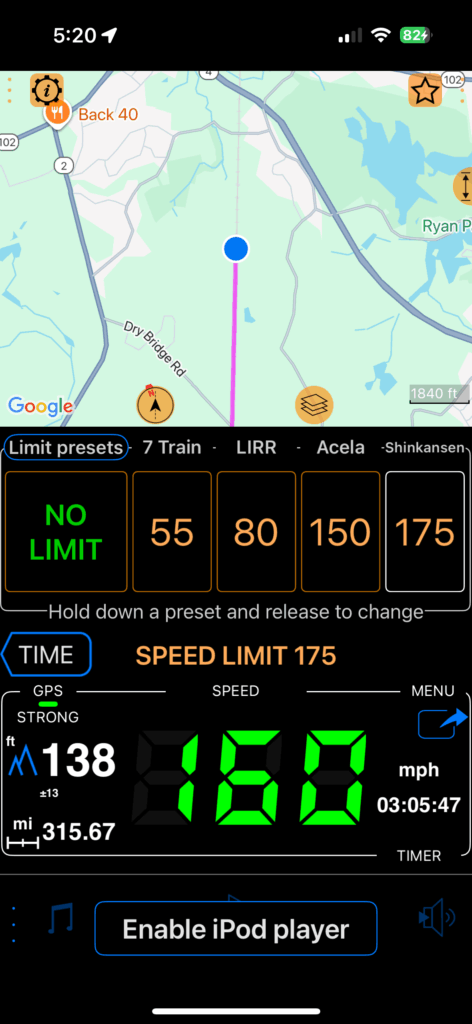 Overall the launch of NextGen Acela is a pivotal moment for Amtrak in its ability to deliver a higher quality, lower cost, more reliable high-speed service. It may not be perfect, but the overall improvements outweigh the missed opportunities. And in an ironic twist of fate, my return trip home from the NextGen Acela media ride booked on an original Acela trainset was canceled due to fleet unavailability. Bring on the new trains.
Overall the launch of NextGen Acela is a pivotal moment for Amtrak in its ability to deliver a higher quality, lower cost, more reliable high-speed service. It may not be perfect, but the overall improvements outweigh the missed opportunities. And in an ironic twist of fate, my return trip home from the NextGen Acela media ride booked on an original Acela trainset was canceled due to fleet unavailability. Bring on the new trains.
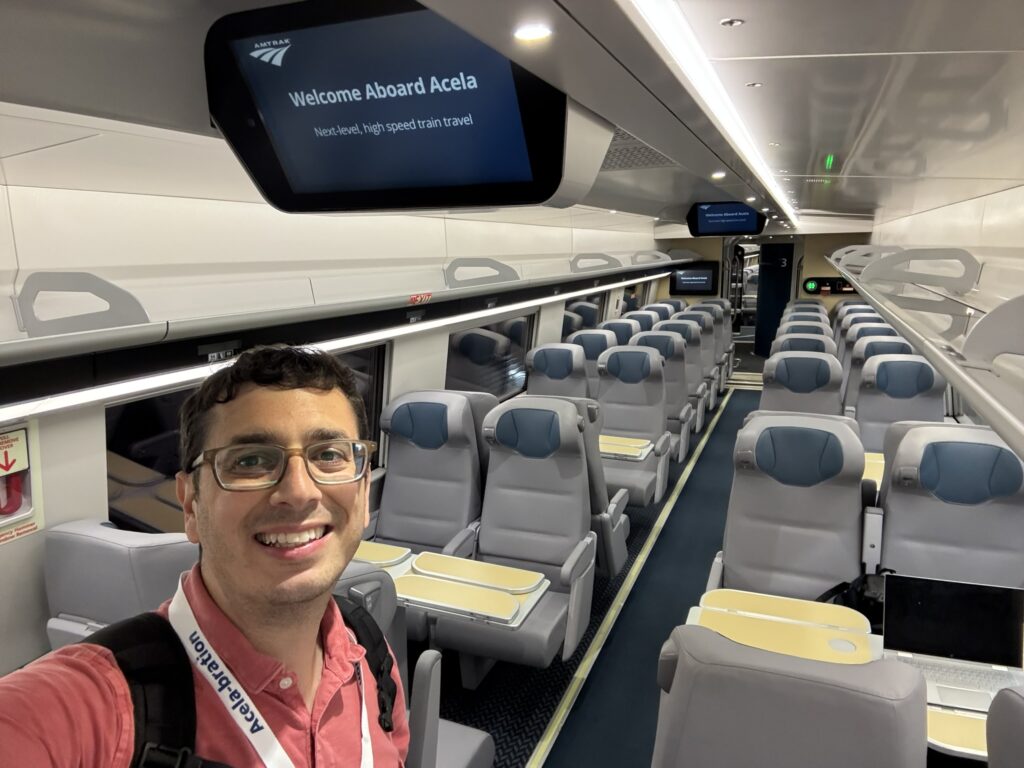 Related Articles:
Related Articles:
- Amtrak issues RFP for single-level long distance coaches
- Amtrak to launch NextGen Acela service on August 28
- JetBlue and Brightline forge plane to train intermodal pact
- Why Amtrak Acela First Class feels like poor value
- Amtrak seeks to differentiate Acela with new enhanced menu
All images credited to the author, Jason Rabinowitz




